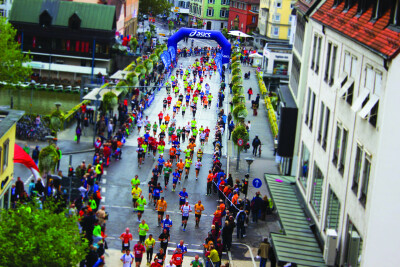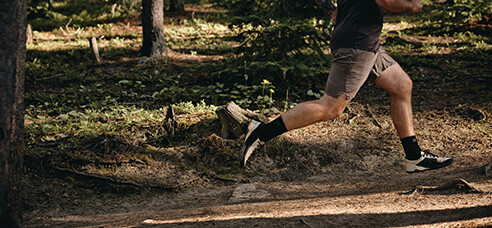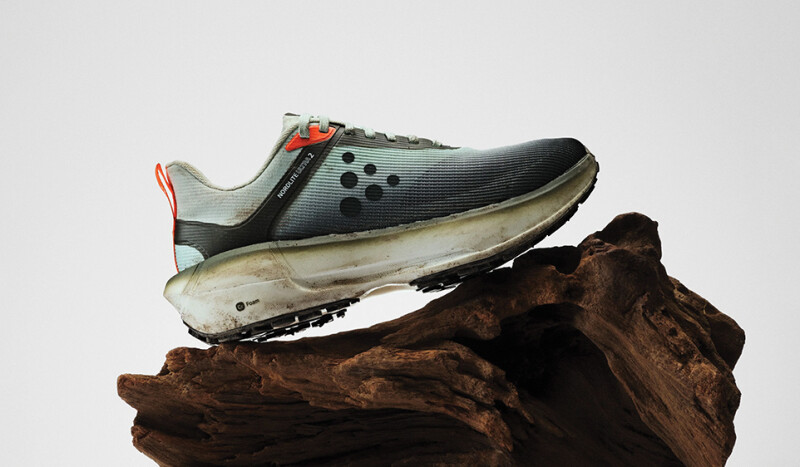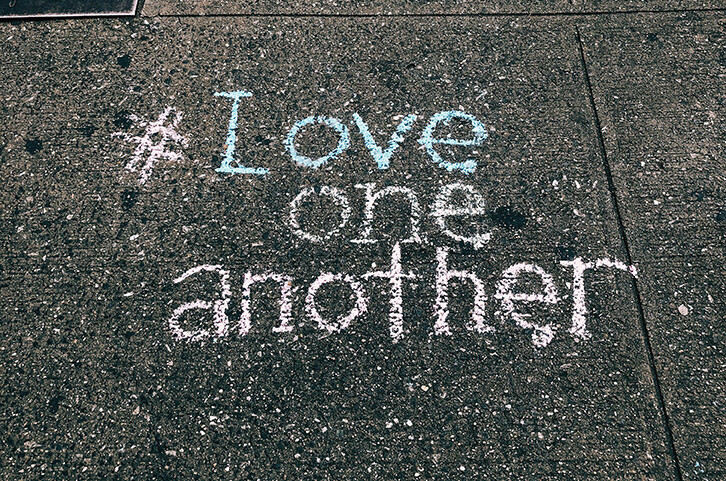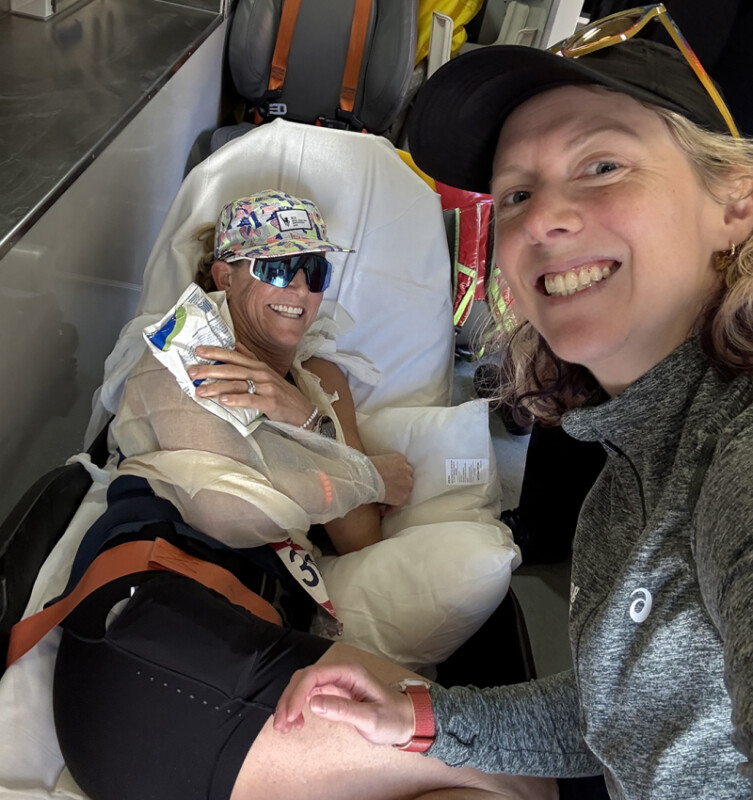There is a lot to be optimistic about in America these days. Vaccinations are proceeding and many areas are flirting with normalcy when it comes to in-person events and everyday activities. America is edging closer and closer to putting the pandemic (hopefully, mostly) behind us. And that is certainly good news for the business of running, which although it pivoted so well to pandemic-era virtual events and selling, still relies on in-person contact and communication.
None of this is meant to downplay or diminish the damage COVID-19 has inflicted on us personally and as a society, but there is reason to be generally optimistic.
How does that optimism apply to the running world?
Not surprisingly, it’s very complicated.
Much depends on what industry lane you occupy Ñ and even there it remains complicated. Footwear sales for some companies were strong in 2020, with companies such as Brooks, Puma and Hoka One One all performing well. But performance at Nike, Adidas, Under Armour, ASICS and New Balance all suffered to varying degrees. Activewear was way up in some areas, but down in others.
How It All Started for Road Racing
The road racing world was more even-handed in selecting winners and losers Ñ every major, mid-major and small community race was either cancelled or significantly downsized. But beneath the surface and high-profile cancellations, the business impact on road racing is just as confusing.
By the time Spring 2020 hit, in-person racing was basically over. Race Result Weekly’s editor David Monti reported that 51 events were held in-person in 2020 after the coronavirus pandemic hit. Fifteen were U.S.-based events and they were mostly small road races.
Immediately, IRL races announced they were “going virtual,” a term as overused by the end of 2020 as the cookie cutter virtual races that emerged. Pay $50, upload your time, get a shirt and a medal.
Granted, some races had very little time to react to the pandemic and simply had no choice other than a “plain vanilla” virtual race. Others simply lacked the resources to do anything out-of-the-box. This is understandable because, after all, they are IRL race directors, not digital experience creators.
There were also opportunists who saw a long-term world with no IRL races and started churning out virtual race after virtual race, some without any connection to the culture or theme or location they were (at times) appropriating.
And finally there were those who harnessed the power of a brand (recognizable comic book heroes, cartoon characters, Hollywood movies) and/or their own company or state identity, and used that association to get runners excited. And those runners got very excited, signing up for well-marketed, themed swag that became a primary driver of virtual sign ups. One race director worried aloud that they’d become a swag e-comm business because of the emphasis on “stuff” rather than running or experience.
No matter what any given virtual race looked like, in the end they all existed for the same purpose: survival. Race organizations did what they had to do to survive and Ð except in the case of some less-than-ethically-themed events Ð no one can begrudge them for doing so.
So with a cloudy rearview image of 2020 (races were down, all of them, but some weren’t, and some crushed it in 2020), what did the first half of 2021 look like?
As vaccines have steadily rolled out across the country, and with some communities being more willing to embrace in-person events earlier, events are slowly coming back. As of early last month, most have been very small and still held with social distancing measures and masking requirements in place. The U.S. majors are scheduled for the fall Ð all with virtual options as well Ð and just about every racing-inclined runner is itching for races to return.
Right?
Well, to say it again Ñ it’s complicated.
Racing in 2021 is just as confusing as 2020. On the one hand, it seems like pent-up demand for racing is so strong that it’s sure to overwhelm any race’s field size.
BibRave operates not just a large community of 150 running influencers of our own, but also communities for shoe brands, race organizations, headphone companies and sunglasses companies. We have our finger on the pulse of a decent-sized section of the running community and from what we’re seeing and hearing, demand for races should outstrip race capacity across markets. Some version of “I’m over virtual racing and can’t wait for IRL races to return!” echoes throughout our Slack channels.
Posted results and data shared by Running USA about 2021 member events does reflect some of this optimism for racing this year. A few small to mid-sized races (in the low thousands of participants) have posted 2021 numbers on par with 2019, while others have shown success simply by hosting races with reduced fields (though still in the mid thousands of participants) and no notable spike in COVID-19 cases.
However, in speaking with other large race organizations, many are bearish on filling up their races even with reduced field sizes as required by local permitting authorities. Frankly speaking, many will just take however many participants they can get, but hopes aren’t always high that consumers will be ready and willing to spend more on a race (more on that below) that takes place amidst so much uncertainty.
Then there’s a technical problem beyond a reduced field size and uncertain demand: Many races are already full from 2020 cancellations. Especially if an event has a reduced field size, when they factor in roll-overs from 2020 cancellations some races have no capacity for new runners.
Those people have already paid (some paid in 2019), so even by hosting an event in 2021, a race that’s filled to capacity might be making little or no new revenue in 2021. The problem isn’t just an issue for large races either Ñ races of all size are experiencing this additional pinch.
So there’s a multifaceted problem with reduced field sizes from municipalities unwilling to grant a permit for a large (5-10,000 person) event and also the risk of flagging demand for spaces in these smaller fields, plus the fact that many races are starting the year full but with no new revenue.
The Worst Part
The most vexing aspect of these headwinds and potentially weak consumer demand is that as vaccination rates increase, and our understanding of COVID-19 improves, it’s becoming clear that hosting an outdoor event can be done safely.
There will always be safety concerns, but we’ve never lived in a risk-free world and there will always be a risk of getting sick when around large groups of people. We simply can’t and shouldn’t hold out for a situation where an event can be 100 percent safe Ñ that’s not a reality we’ve occupied, nor will we ever.
Races now have a lot of information and useful case studies for how to host a relatively large event safely. Doing so obviously represents more costs, making the economics behind hosting a race in 2021 even more dubious. Hosting a race is and should be viewed as safe by consumers, so when reduced field sizes don’t fill, it’s particularly frustrating for an already beleaguered industry.
A Time For Solid Optimism
Finally, all of the body shots and sucker punches the road racing industry endured in 2020 came amidst steady decline from its peak in 2013. So there are headwinds and headwinds and headwinds.
If there’s restrained optimism for 2021, there is a lot of optimism for the road racing industry for 2022 and beyond. Next year is when most are highly confident that pent-up demand will meet with partial satisfaction from virtual races and an incomplete return to in-person races in 2021.
All of those factors will also converge with the spike in new runners that the pandemic created (Brooks gained 1.6 million runners through October 2020, and Strava saw a record 3.4 million downloads in May).
There’s a lot of cause for optimism and time will tell if the rebound is a 2021 or a 2022 tale. Either way, the end is in sight as the country gets ready to race again.
Tim Murphy co-founded BibRave in late 2013, originally creating a place for runners to gather online and discuss the best races to run, the best gear to try, and the best nutrition to use. From there, the company expanded into community building and influencer marketing, eventually becoming a full-service, endurance-focused marketing agency. He can be reached at [email protected]
.
